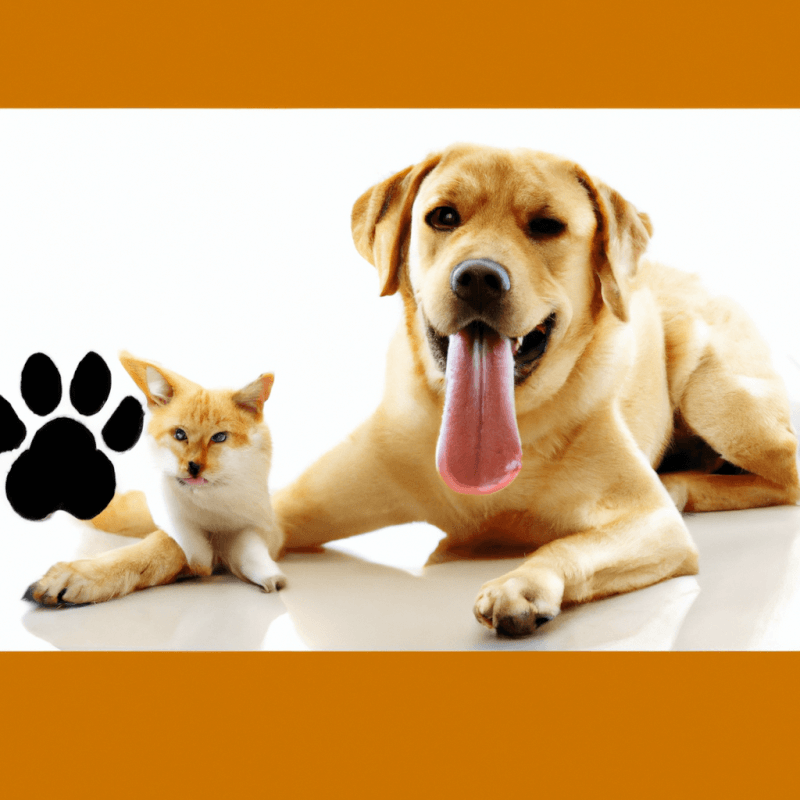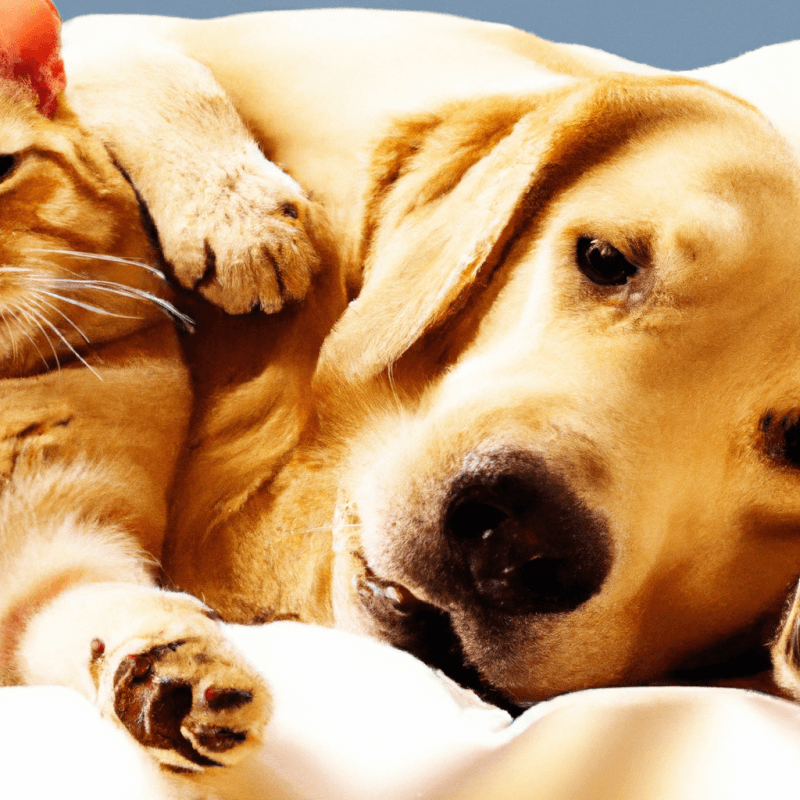So, you finally decided to add a new furry friend to your family, and you’re eager to introduce them to your existing pet. But hold on a minute – introducing a new pet to your current one can be a bit of a delicate dance. You want them to become fast friends, but you also want to ensure a smooth transition. Don’t worry, though, because in this article, you’ll discover some helpful tips and tricks to successfully introduce your new pet to your current one, creating a harmonious and loving environment for all.

Setting the Stage
Assessing your existing pet’s temperament
Before bringing a new pet into your home, it’s important to assess your existing pet’s temperament. Consider their age, energy level, and socialization history. Some pets may be more tolerant and welcoming of a new companion, while others may be more territorial or prone to challenging new additions. Understanding your pet’s personality will help you anticipate their reaction to a new pet and plan the introduction accordingly.
Ready for Cat Trivia?
Test your knowledge about cats!

Choosing the right time to introduce the new pet
Timing is crucial when introducing a new pet to your existing one. It’s essential to consider both pets’ current health and emotional well-being. If your existing pet is dealing with illness, stress, or recently experienced a major life change, it may not be the best time to introduce a new pet. Wait until your pet is in a stable and content state before bringing a new companion into their life.
Prepare your home for the new addition
Creating a safe and comfortable environment for your pets is an important step in the introduction process. Ensure that your home is properly set up for the new pet’s arrival, with designated areas for eating, sleeping, and playing. Remove any potentially dangerous or valuable items that may lead to confrontations between the pets. Additionally, provide sufficient resources, such as food bowls, water stations, and litter boxes, to prevent resource guarding and reduce competition.
Pre-Introduction Preparations
Consult with a veterinarian
Before making any introductions, it’s crucial to consult with a veterinarian. They can assess the health of both pets and provide advice on introducing a new pet based on their individual needs. They may recommend specific precautions or strategies to ensure a smooth and safe transition for both pets.
Separate living spaces for both pets
To ease the introduction process, it’s essential to provide separate living spaces for each pet. This allows them to have their own safe haven where they can relax and retreat to if needed. Providing separate spaces also helps prevent any territorial disputes and reduces stress during the initial stages of introduction.
Understanding each pet’s needs and personalities
Understanding each pet’s needs and personalities is key to successful introductions. Take the time to learn about their individual preferences, fears, and triggers. This knowledge will help you anticipate potential challenges and tailor the introduction process to address their specific needs. Consider factors such as their socialization history, previous experiences with other animals, and any unique behaviors they may exhibit.
Gradual Introduction Techniques
Scent swapping
Scent swapping is an effective technique to familiarize your pets with each other’s scent before a face-to-face meeting. Begin by swapping their bedding or using separate blankets to let each pet get accustomed to the smell of the other. Gradually increase the duration of scent exposure, allowing them to associate the scent with positive experiences, such as playtime or treats. This method helps build familiarity and reduces the risk of aggression during the actual introduction.
Visual introductions
Visual introductions involve allowing both pets to observe each other from a safe distance. Use a baby gate or a door cracked open to create a physical barrier while still allowing visual contact. This technique helps assess each pet’s reactions and allows them to become more familiar with each other’s presence without direct interaction. If either pet shows signs of distress or aggression, gradually increase the distance and try again at a later time.
Controlled face-to-face meetings
Once your pets are familiar with each other’s scents and have shown positive reactions during visual introductions, it’s time for controlled face-to-face meetings. Use a leash or harness for each pet to maintain control and prevent any potential aggression. Allow them to approach each other at their own pace while closely monitoring their body language. Use treats, praise, and reassurance to create a positive association with calm and respectful behavior.
Supervised Interactions
Leashed meetings
When introducing pets, especially dogs, having them on a leash can provide an added layer of control and safety. Leashed meetings allow you to quickly intervene if the pets exhibit any signs of aggression or discomfort. Keep the leash loose to allow for natural interaction, while still being prepared to separate them if necessary. Gradually increase the duration and frequency of leashed meetings as the pets become more comfortable with each other.
Using baby gates or playpens
Baby gates or playpens can be used to create physical barriers between pets while allowing them to interact in a controlled environment. This method is particularly useful for introducing cats or small dogs to larger dogs. The physical barrier provides a sense of security for both pets, allowing them to observe and sniff each other without direct contact. Gradually increase their exposure to each other in the presence of the barrier, closely monitoring their behavior for any signs of aggression or stress.
Positive reinforcement
Positive reinforcement plays a vital role in facilitating positive interactions between your pets. Reward desirable behavior, such as calmness, playfulness, and respectful engagement, with treats, praise, and affection. By associating positive experiences with being around each other, the pets will develop a positive emotional bond that can help foster a harmonious relationship. Be patient and consistent with your reinforcement to establish a strong foundation for their interactions.

Addressing Challenges
Aggression or dominance issues
In some cases, aggression or dominance issues may arise during the introduction process. It’s essential to address these challenges promptly and effectively. Working with a professional animal behaviorist can provide valuable insights and strategies tailored to your specific situation. Techniques such as desensitization, counter-conditioning, and behavior modification exercises may be recommended to address aggression or dominance.
Resource guarding
Resource guarding can occur when a pet becomes possessive or protective of their food, toys, or other belongings. It’s crucial to address resource guarding behavior before introducing a new pet to avoid potential conflicts. Gradually introduce the concept of sharing and practice positive reinforcement when both pets are in close proximity to resources. With time and consistent training, resource guarding tendencies can be successfully managed and reduced.
Territorial behavior
Territorial behavior is common when introducing a new pet, especially among cats. Providing separate territories with designated spaces for each pet can help alleviate territorial conflicts. Each pet should have their own food, water, litter box, and resting areas to reduce competition and promote a sense of ownership. Gradually expand their territories as they become more comfortable with each other, always closely monitoring their behavior for any signs of territorial aggression.
Establishing a Routine
Feeding schedule and separate feeding areas
Maintaining a consistent feeding schedule and separate feeding areas is crucial to prevent competition and potential food-related conflicts. Establish a routine that allows each pet to eat their meals peacefully and at their own pace. Ensure that the feeding areas are far apart and provide enough space for each pet to enjoy their meal without feeling threatened or rushed.
Scheduled playtime and exercise
Regular exercise and playtime are important for both physical and mental stimulation. Establish a schedule that includes individual playtime as well as shared play sessions for both pets. This allows them to release energy, bond with you, and engage in positive interactions with each other. Incorporate interactive toys and activities that stimulate their minds and encourage cooperative play to strengthen their bond.
Maintaining individual attention and affection
While nurturing the relationship between your pets, it’s vital to maintain individual attention and affection. Spend quality one-on-one time with each pet to ensure they feel loved and valued. This helps prevent feelings of jealousy or neglect and ensures that each pet receives the attention they need to thrive. By balancing individual and shared experiences, you foster a sense of harmony and prevent potential conflicts.

Creating a Harmonious Environment
Avoiding favoritism
It’s important to avoid favoritism and treat each pet equally. Giving preferential treatment to one pet over the other can lead to feelings of jealousy and resentment. Provide equal amounts of attention, affection, and rewards to both pets. This creates a fair and balanced environment, allowing them to develop a healthy and positive relationship with each other and with you.
Equal distribution of resources
To prevent conflicts and ensure fairness, distribute resources equally between your pets. This includes food, water, toys, resting areas, and attention from family members. By providing equal access to resources, you minimize competition and reduce the likelihood of aggression or dominance-related issues. It’s important to monitor resource distribution to ensure that both pets are getting their fair share.
Providing ample mental stimulation
Pets thrive when they have sufficient mental stimulation. Engage both pets in activities that challenge their problem-solving skills and provide entertainment. Interactive puzzle toys, treat-dispensing toys, and training sessions can help keep their minds sharp and focused. Mental stimulation not only promotes a healthier and happier lifestyle, but it also helps distract from potential conflicts and brings them closer together.
Recognizing Signs of Compatibility
Mutual grooming and bonding behaviors
One of the signs of compatibility between pets is mutual grooming and bonding behaviors. When pets groom each other or engage in reciprocal affectionate behaviors, it indicates a level of comfort and trust. These bonding behaviors show that they have accepted each other as part of their social group and are forging a positive connection. Recognize and encourage these interactions as they reflect a growing sense of compatibility.
Relaxed body language
Observing your pets’ body language is crucial in gauging their level of comfort and compatibility. Relaxed body language, such as loose muscles, wagging tails, or soft eyes, indicates that both pets feel at ease in each other’s presence. On the other hand, signs of tension, such as raised fur, stiff posture, or growling, may indicate potential issues that need to be addressed. Pay close attention to their body language to ensure their interactions remain positive and stress-free.
Playful engagement
Playful engagement between pets is a positive sign of compatibility and compatibility. When pets play together, chasing, wrestling, or engaging in gentle play bites, it shows that they are comfortable and enjoy each other’s company. Play is an essential aspect of building social bonds and promoting a positive relationship. Encourage and facilitate their play sessions while monitoring their interactions to ensure they remain playful and respectful.

Addressing Persistent Issues
Consulting a professional animal behaviorist
If persistent issues arise during the introduction process or if the pets continue to show signs of aggression or discomfort, consulting a professional animal behaviorist is highly recommended. An experienced behaviorist can provide expert guidance, assess the situation, and develop a personalized plan to address the challenges. They will work with you to implement effective behavior modification techniques and help resolve any lingering issues.
Implementing behavior modification techniques
Behavior modification techniques can be used to address persistent issues during the introduction process. These techniques focus on changing the pets’ underlying emotional responses and associations with certain situations. Techniques such as desensitization, counter-conditioning, and positive reinforcement can be effective in reshaping their behavior and building positive associations with each other. Consistency and patience are key when implementing behavior modification techniques.
Considering long-term management solutions
In some cases, pets may not develop a strong bond or may continue to exhibit incompatible behaviors even after thorough introduction efforts. In such situations, it may be necessary to consider long-term management solutions. This could involve keeping the pets in separate parts of the house, using rotation schedules to ensure equal attention, or providing supervised interactions only. Each situation is unique, and finding the best long-term management strategy requires careful consideration of the pets’ needs and well-being.
Building a Lifelong Bond
Patience and gradual integration
Building a lifelong bond between your pets requires patience and gradual integration. Allow them to dictate the pace of their relationship, ensuring that they have positive experiences and ample time to adjust. Rushing the process can lead to unnecessary stress and potential conflicts. By being patient and understanding, you create an environment where trust and companionship can flourish.
Consistency in training and socialization
Consistency is key when building a lifelong bond between pets. Ensure that rules, boundaries, and training techniques remain consistent for both pets. This promotes fairness and helps establish a balanced dynamic within the household. Consistent socialization with other animals and positive experiences outside of the home also plays a significant role in fostering a strong bond between your pets.
Balancing individual and shared experiences
Maintaining a balance between individual and shared experiences is crucial for a lifelong bond between pets. While your pets need opportunities to develop their individuality, they also benefit from shared experiences that build their social bond. Plan activities and outings that involve all members of the household, including both pets. By nurturing a positive and inclusive environment, you create opportunities for your pets to strengthen their bond over time.
In conclusion, introducing a new pet to your existing pet is a process that requires careful planning, patience, and understanding. By assessing your existing pet’s temperament, choosing the right time for introduction, and preparing your home appropriately, you set the stage for success. Gradual introduction techniques, supervised interactions, and positive reinforcement help facilitate a harmonious relationship between your pets. Addressing challenges, establishing a routine, and recognizing signs of compatibility further strengthen their bond. When persistent issues arise, consulting a professional, implementing behavior modification techniques, and considering long-term management solutions can help overcome obstacles. Ultimately, building a lifelong bond between your pets requires patience, consistency, and an unwavering commitment to their well-being. By following these guidelines and providing a nurturing environment, you can create a loving and harmonious home with your new pet and existing companion.



